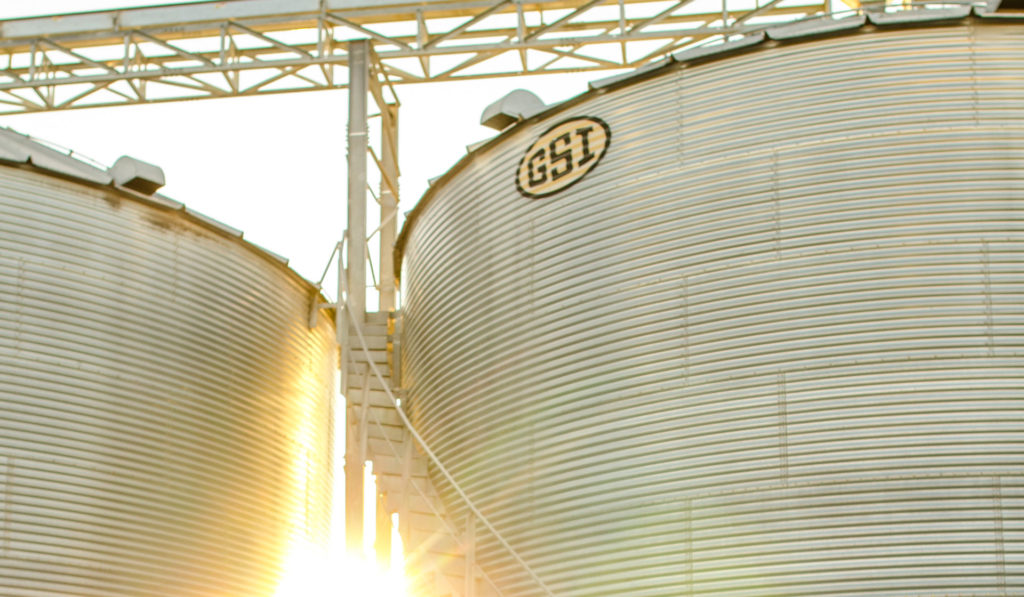AGCO Equipment Solutions for a Challenging Year on the Farm
Equipment and technology solutions from AGCO can help with harvest, grain conditioning, soil health and more after a tough year on the farm in 2019.

Crop producers in many parts of the country are facing extra challenges well into the next crop season. Flooding or too much wet weather during planting led to late-planted (or not-planted) crops, and soils may remain damaged from those wet conditions, especially where farmers had no choice but to work and plant wet fields.
Here are some of the ways that AGCO equipment and technology can help overcome obstacles during harvest, fall tillage and other field work.
Conditioning for High-Moisture Grain
Experts are predicting that late-planted corn and soybeans in many states will need far more drying time this fall than in a normal year. That’s why Gary Woodruff, GSI district manager for Indiana and Kentucky, says the GSI WatchDog™ System will benefit crop producers by allowing them to monitor their grain dryer in real-time from their smartphone or any web-connected device. “This is the year that you’re going to spend a lot of hours in the combine seat to harvest and process high-moisture grain,” especially in northern states, he says. “And some guys are going to see up to five times more hours of drying than normal, probably for their entire crop. Having that ability to pull out your phone and be sure the dryer is still running and tweak settings if needed could be a tremendous asset.”
Grain Harvest in Wet Fields, Uneven Crops
With the strong potential for wet fields this fall, the Fendt® IDEAL™ combine is up to the job of harvesting in less-than-ideal conditions – even standing water. The exclusive TrakRide™ track system keeps the combine moving smoothly and evenly over the field for a better cut and more comfortable ride for the operator.
In a year when many corn and soybean fields were planted extremely late in the season, and in some cases replanted, it’s highly likely that producers will be harvesting grain at moisture levels considerably higher than most years. And weather-caused uneven emergence means variability in maturity and moisture, coupled with the real potential of frost-damaged grain in northern growing areas, adding to harvesting challenges.
The IDEALharvest system gives producers offers unprecedented, real-time visualization of crop flow within the combine via a special grain-quality camera and 52 sensors, including mass acoustic detection sensors (MADS). In a year like 2019, the ability of the system to compensate quickly for variations in crop density and other conditions can help anticipate and correct problems before they occur. The industry’s largest grain tank (on the IDEAL Class 9 model) unloads at 6 bushels per second while being gentle on grain, allowing the operator to spend more time harvesting and less time unloading.
Reducing Compaction in Water-Damaged Fields
For soils showing areas of compaction through tests or production maps, Larry Kuster, AGCO senior marketing specialist, recommends using one or more of the Sunflower® fall tillage tools to help restore soil tilth and health. To match tools with the depth of the compaction, the SF4213 coulter chisel, the SF2500 Series chisel plows and the SF4511 disc chisel disc have working depths of 8-10 inches, he says, while the 4700 Series in-line coulter rippers can go down to 16-18 inches. “The 4700 can be equipped with a parabolic shank that will really lift soil and do a lot of disturbance work,” he says, “while the minimum-disturbance or no-till shank has a point that just lifts the soil to shatter soil compaction while not disturbing surface residue.”
To lessen future compaction during field work, AGCO® offers a range of equipment with tracks, which can spread the equipment and input load over a greater surface area than tires. The Fendt IDEAL combine has hydraulic suspended rubber tracks with the largest footprint of any combine on every belt size to lessen compaction during harvest. At planting time, the White Planters™ 9924 VE large-frame planter has the industry’s best track system to evenly disburse weight at the same time it delivers top productivity, with 50% more seed capacity than most other planters in its class.
Machines equipped with tires also can lessen compaction by providing adequate flotation with reduced tire pressures. This allows the tire to bulge slightly and increase its footprint on the soil. However, the ideal pressure for fieldwork isn’t ideal for road transport.
One way to overcome this issue is with a central tire pressure inflation system, such as Fendt VarioGrip.® Available as a factory-installed option on the Fendt 800, 900 and 1000 Series tractors, the system allows a farmer to adjust tire pressure from 11.5 psi to 35 psi from inside the cab.
“When you’re in the field, you want to have a lower pressure to maximize the tire footprint and put more lugs to the ground,” says Andrew Sunderman, AGCO tactical marketing manager. “But on the road, that lower pressure creates additional friction and wear on the tire. VarioGrip lets you tailor the ideal pressure. You can even incorporate it into your headland management sequence.”






